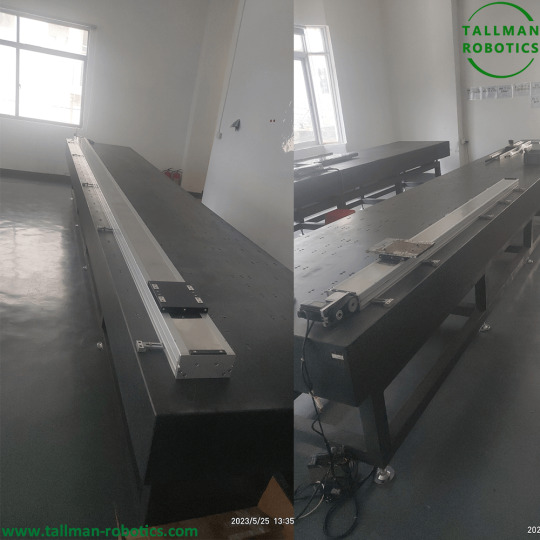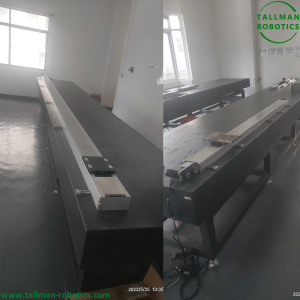#Automatedsolderingrobot
Explore tagged Tumblr posts
Text
Single Axis Linear Robot Will Be Delivered To Singapore

Single Axis Linear Robot from Tallman Robotics Limited Will Be Delivered To Singapore.

A Single Axis Linear Robot is a type of robotic system that is designed to perform linear motion along a single axis. A single axis linear robot, also known as a linear actuator or cartesian robot, is an essential piece of machinery in numerous industrial applications. These robots provide precise, efficient, and highly customizable linear motion solutions, making them ideal for repetitive tasks or processes that require strict accuracy and control. Components: 1. Rigid frame: This provides the structural foundation for the robot's operation. Often made of metal such as aluminum extrusion or steel, the frame is responsible for maintaining rigidity and stability during movement. 2. Motorized drive system: This is the component responsible for generating and controlling the robot's motion. The drive system typically consists of an electric motor (stepper, servo or brushless DC motor) that converts electrical energy into linear motion via a mechanical translation system such as ball screws, linear motors, or belt and pulley systems. 3. Linear guide system: The linear guide ensures smooth, precise, and highly accurate movement along the single axis while also preventing undesired motion in other directions. Linear guides can include profiled rails with rolling bearings, linear bushings, or magnetic guidance systems. 4. End effector or tooling: This is the part of the robot that interacts with the workpiece or material. Depending on the specific application, the end effector could be a gripper, a vacuum cup, a welding tool, or even a small camera. 5. Control system: The control system manages and synchronizes the motion of the single-axis linear robot. The system typically consists of a programmable automation controller (PAC) or microcontroller, which receives input from sensors, user interfaces, or other devices and sends the desired motion commands to the motorized drive system. Applications: Among the various scenarios where single-axis linear robots are employed, these are some of the most common ones: 1. Assembly automation: Linear robots are essential in the assembly of electronic devices, automotive components, and various consumer products. They can quickly and accurately position parts for assembly or perform tasks such as screw tightening, adhesive dispensing, or press-fitting. 2. Material handling: Single-axis robots are frequently employed in conveyor systems and packaging lines to load/unload materials or transport goods between different stations. 3. Quality control and inspection: Attaching cameras or sensors to linear robots can automate inspection processes, thus ensuring consistent quality and production speed. This is particularly useful in industries like food processing, pharmaceuticals, and semiconductors. 4. Laboratory automation: In life sciences and clinical laboratories, single-axis linear robots can simplify tasks such as sample handling, tube sorting, and liquid dispensing. In conclusion, single-axis linear robots are fundamental tools in modern manufacturing, as they provide accurate, reliable, and customizable motion control. They help enhance the efficiency of various industrial tasks and enable businesses to maintain high standards of quality and productivity. You are welcome to https://www.youtube.com/@tallmanrobotics to watch our video centre for more projects or visit our website to check other series or load down e-catalogues for further technical data. Read the full article
#1-axisrobot#AutomatedPickingSystems#Automatedsolderingrobot#ChinaSingleAxisRobotManufacturers#Linear&GantryRobots#LinearActuators#Linearmotorsingleaxisrobots#LinearStageAxisSingleLinearRobotArm#RoboticPicking#RoboticSystems#Singleaxisrobots#SingleAxisStages#Single-AxisRobotLinearModule
0 notes